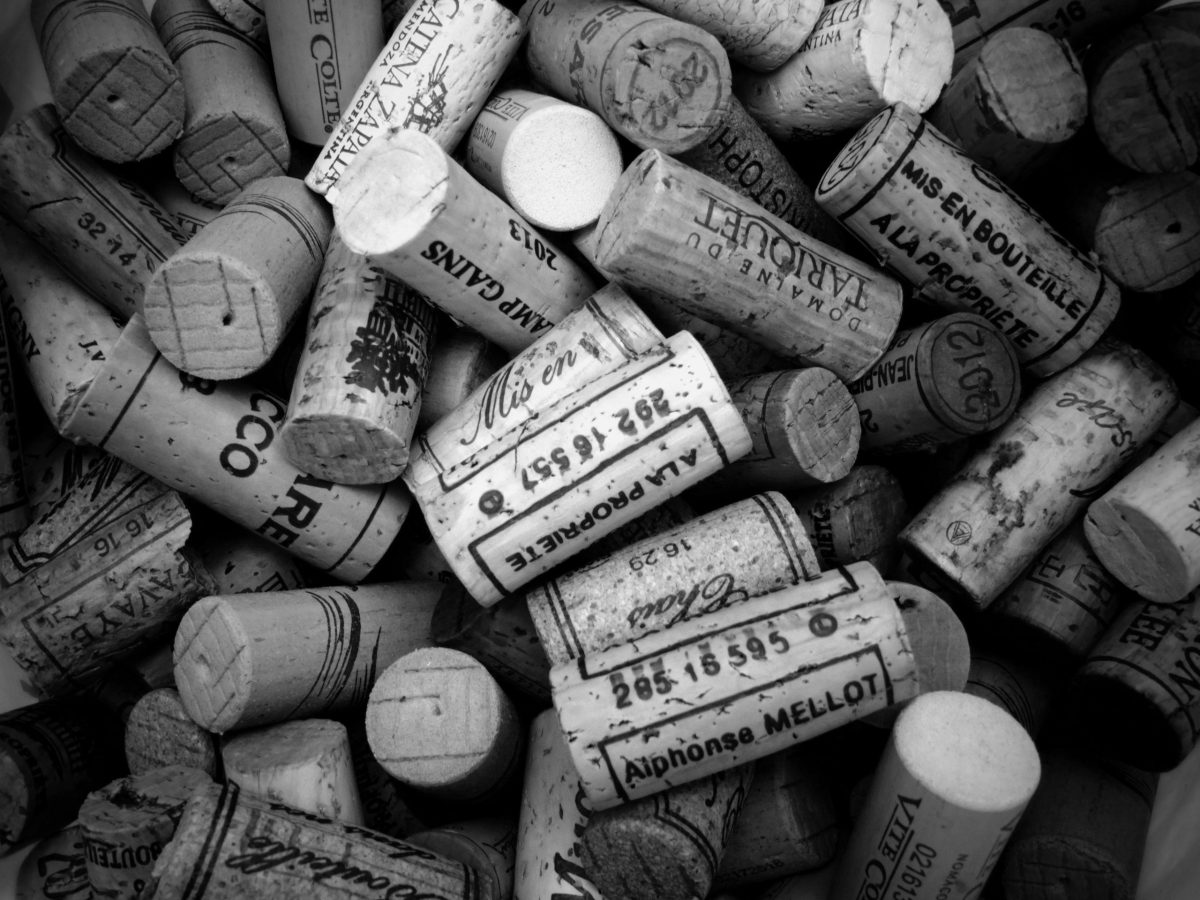A wine is sealed until someone opens it and how it was sealed can be interesting.
Wine corks are an important component of a wine bottle. They have been around for thousands of years and serve as a protective barrier to wine.
Wine corks are typically made from either synthetic or organic materials, namely cork oak tree and polyethylene. Natural corks are the most common and popular type of cork used in wine bottles because of their superior sealing ability. They are obtained from the bark of cork oak trees.
Synthetic corks have been used for many years to replace the natural cork. The synthetic resin corks are a lighter alternative to natural cork.
One of the benefits of synthetic corks is that it minimizes the risk of cork taint. Cork taint is an off-flavor in wine and caused by the chemical compound 2,4,6-trichloroanisole, which is found naturally in cork oak trees.
Champagne corks are designed to be more elastic and flatter at the bottom part of the cork. When carbon dioxide combines with a high amount of pressure, they expand and form into a mushroom-shaped cork.
Agglomerated cork closures are made from a mass of granular or powdered corks. These closures are formed by a method that includes the following steps: mixing cork granulates and an adhesive to form a mixture, forming blocks of the mixture. This style of cork is tightly held together that no oxygen can get in and spoil the wine.
How is the cork harvested?
The cork tree should only be harvested by qualified people called “extractors”, who will guarantee that the procedure does not harm or damage the tree. Harvesting should only be done between the end of May, and the beginning of June. Cork may be harvested from the tree without harming it under these conditions.
I recently saw a documentary where the cork trees are harvested, and it was fascinating to watch. It’s terrific to know that the trees aren’t destroyed during the process. Wine corks can be used for making wreaths, jewelry, wall art, and filling large glass containers for decoration.


Beverly says,
I never knew how corks were produced.
I truly appreciate her articles